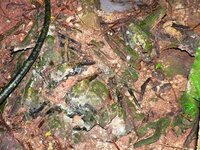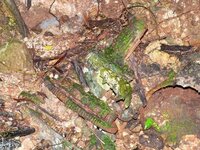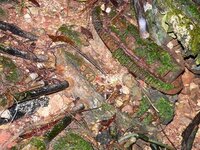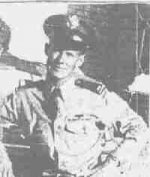newbieprospector
Full Member
Hello...my daughter located this in the jungle in Guam and I was wondering if anyone might be able to tell me what it's from...auto, plane, something else? It's at the bottom of a small trench but could have started as a crater from impact if a plane...no other wreckage was found...some trash though...from the ground to the top is approximately 3.5 to 4 feet...thanks!









